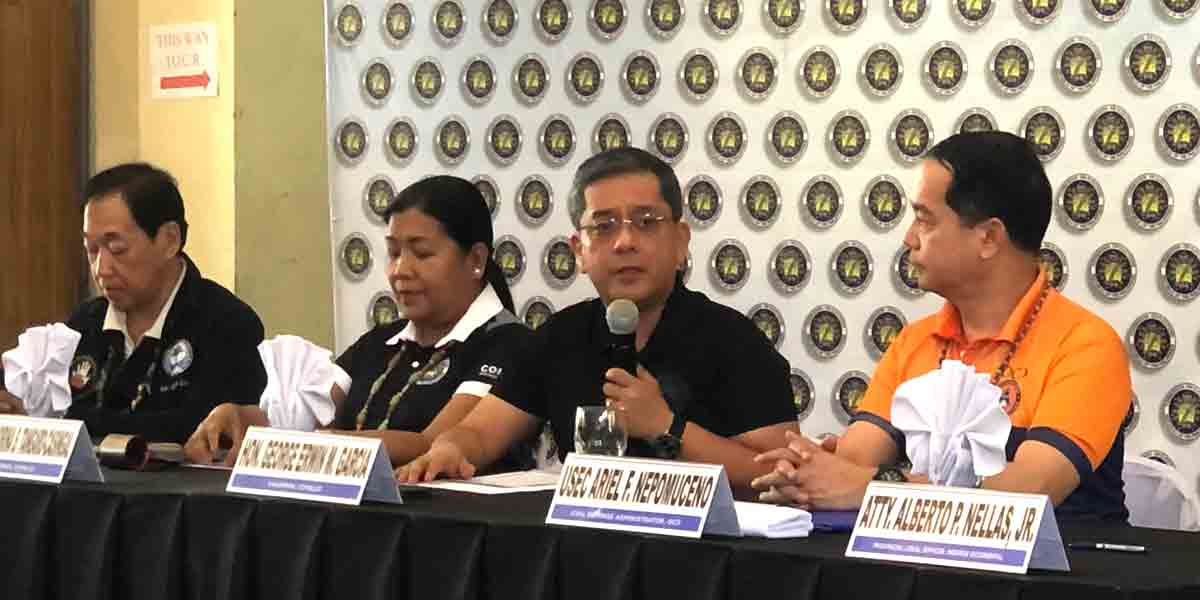 (Speech delivered by Dr. Perla S. Zulueta during the Rizal Day Celebration, December 30, 2018)
(Speech delivered by Dr. Perla S. Zulueta during the Rizal Day Celebration, December 30, 2018)
I MUST admit that when I first received the invitation to speak in today’s celebration of the Rizal Day to mark the martyrdom of our national hero, I was a bit hesitant considering my limited knowledge of the subject.
Like many of you, I also studied the Noli Me Tangere and the El Filibusterismo back in high school. I earned three units in the subject Rizal while in college but sadly, many of the details about our national hero has already slipped my mind.
Once in a while, information surfaces that can somehow refresh our memories, or arouse our curiosities as in the case of trivias that historians like Ambeth Ocampo elaborate to titillate our senses until we find ourselves wanting for more details.
Let us take, for example, the Rizal monument here at Plaza Libertad which was inaugurated 111 years ago today – on December 30, 1907. A committee formed by Dr. Cornelio Mapa was tasked to raise funds for this project.
It may be of interest to you to know that Mapa and Rizal were classmates at the University of Santo Tomas. Mapa, who was from Mandurriao and who once served as councilor of Iloilo City, was the class valedictorian while Rizal only came second.
And of course, Mapa Street here in Iloilo City was named after him that street that connects J. M. Basa and Rizal Streets in the City Proper.
On the other hand, J. M. Basa was named after Jose Ma. Basa, the patriot who smuggled to the Philippines the Noli Me Tangere and the El Filibusterismo
I am telling you these because there are a lot of Rizal- related things here in Iloilo City, from MuelleLoney up to the district of Molo, that can serve as an introductory anecdote to any story on the national hero, one that has a local twist.
Some of you know this already but please allow me to relate it just the same to stress my point, and also for the benefit of those who do not yet know – Rizal had a one-night stand with Iloilo, four months before he was shot in Luneta.
Rizal had a chance to visit Iloilo on August 4, 1896 when the steamer España landed at Muelle Loney. He toured the city, bought some items from a Lebanese store and rented a calesa that brought him to Molo.
What did our national hero do in Molo? According to his own diary, Rizal visited his friend Don Raymundo Melliza, who had just arrived from Cuba where he served as magistrate of the Supreme Court there.
I am from Molo and I am delighted to know that a person of such stature, reputation and distinction as Dr. Jose Rizal had set foot on our soils, particularly on the other end of the street where I now reside.
I live in South San Jose Street in Molo while the house of Don Raymundo Melliza that Rizal visited still stands at the end of North San Jose Street. It was later acquired by Pedro and Rosa Consing, and was inherited by their granddaughter Pacita Lazaro-Arcenas.
What brought Rizal to Iloilo? It was actually a stopover, as he was sailing from Dapitan to Manila after he volunteered his services as a doctor in Cuba and was given leave by Governor-General Ramón Blanco to serve there to minister to victims of yellow fever.
The reason why Rizal visited Melliza in Molo was that he wanted to inquire about Cuba, and there was no other reliable source of information about that country but the former magistrate of its Supreme Court.
Why am I telling you all these? As we all know, Rizal was an ophthalmologist. He had a respectable profession and could have lived comfortably in Spain, where he finished medicine, or in Germany, where he completed his eye specialization. He could have just practiced ophthalmology wherever he wanted. Besides, he was a polyglot and was conversant in 22 languages. He could have lived wherever he wanted – in any country that speaks those 22 languages that he knew.
But Rizal chose a road less travelled, leaving a new trail that had attracted more travellers after him, which we now know as the propaganda movement. Through his writings, he exposed the abuses of Spanish authorities and called for reforms.
It has been said that if we want to achieve something great, we should be ready to give up some conveniences in life. Perhaps, that was what Rizal had in mind that he wanted to achieve something great not only for himself but for his motherland.
Taking a second look at the circumstances, Rizal did not just actually give up some of his conveniences but, as we all know, he gave up his life for the country, ending up achieving not just something great but beyond great. He became our national hero.
And that’s the challenge of today’s celebration how willing are we to give up something for the greater good? How willing are we to emulate Rizal by leaving behind some of our conveniences to pursue something that will impact not just the present but also the future generation?
We celebrate Rizal Day every year, and providentially, at the end of the year to perhaps allow us to re-examine how we fared in the past 12 months. Have we done something great? Have we contributed to the greater good? Did we become Rizal
in our own way?
I am not asking you to die by being shot by firing squad in Luneta and become martyrs. I am encouraging you al think what we can receive from our community what we can also give to the community for its betterment. Remember that from little things, big things grow.
It is therefore from the little altruism, from the little philanthropy, from the little generosity, and from the little patriotism that our
society can grow big and achieve something great.
Starting today, let us all be like Rizal by doing little good things so big good things can grow. Be the heroes we never were.
Madamo gid nga salamat kag maayong aga sa inyo tanan.






















